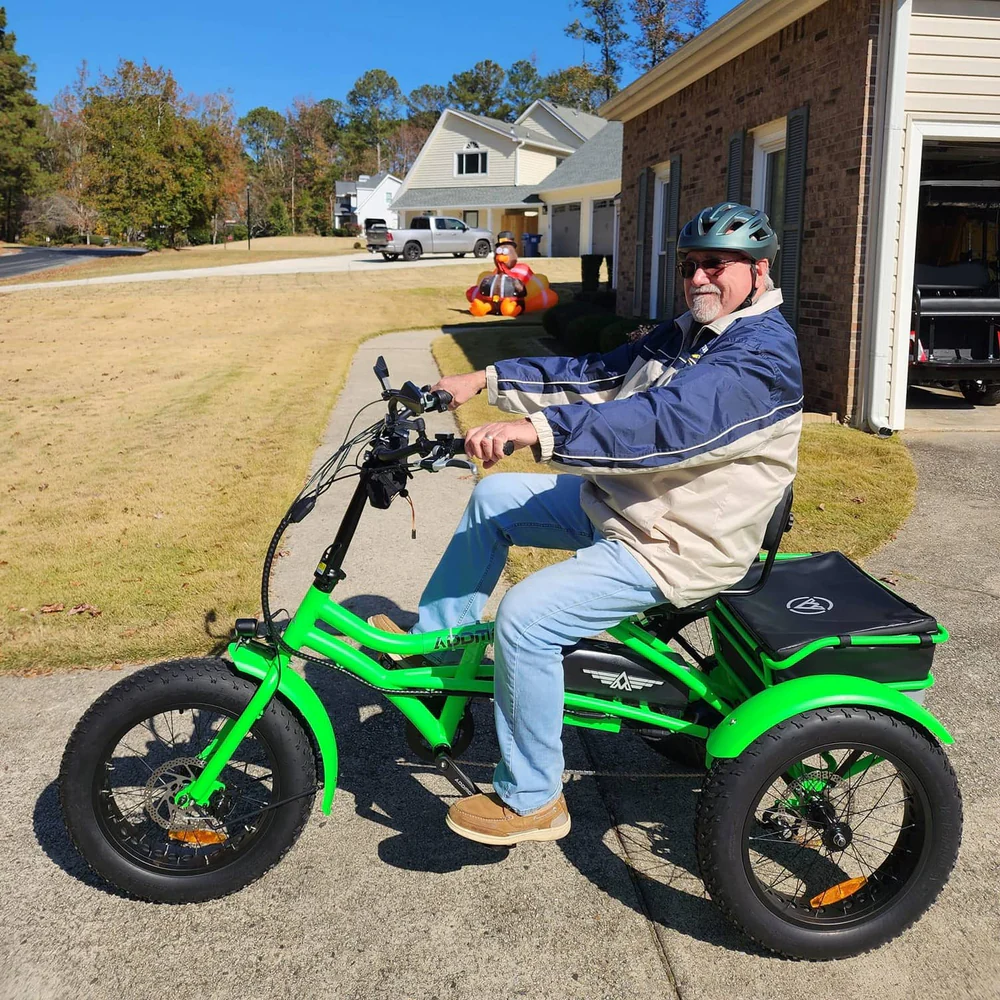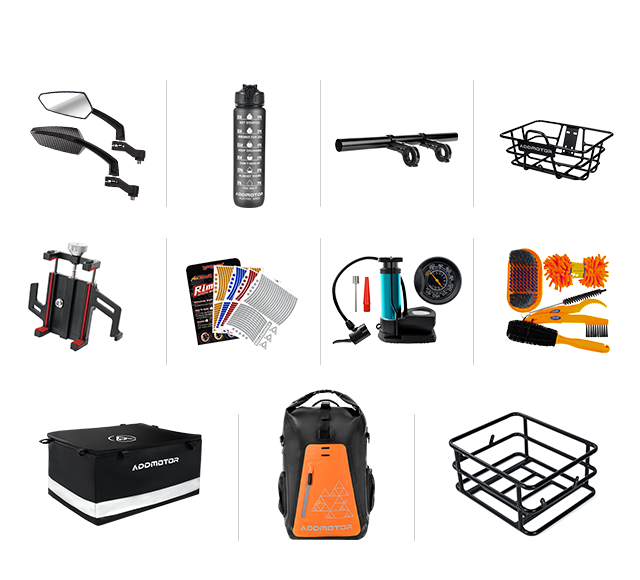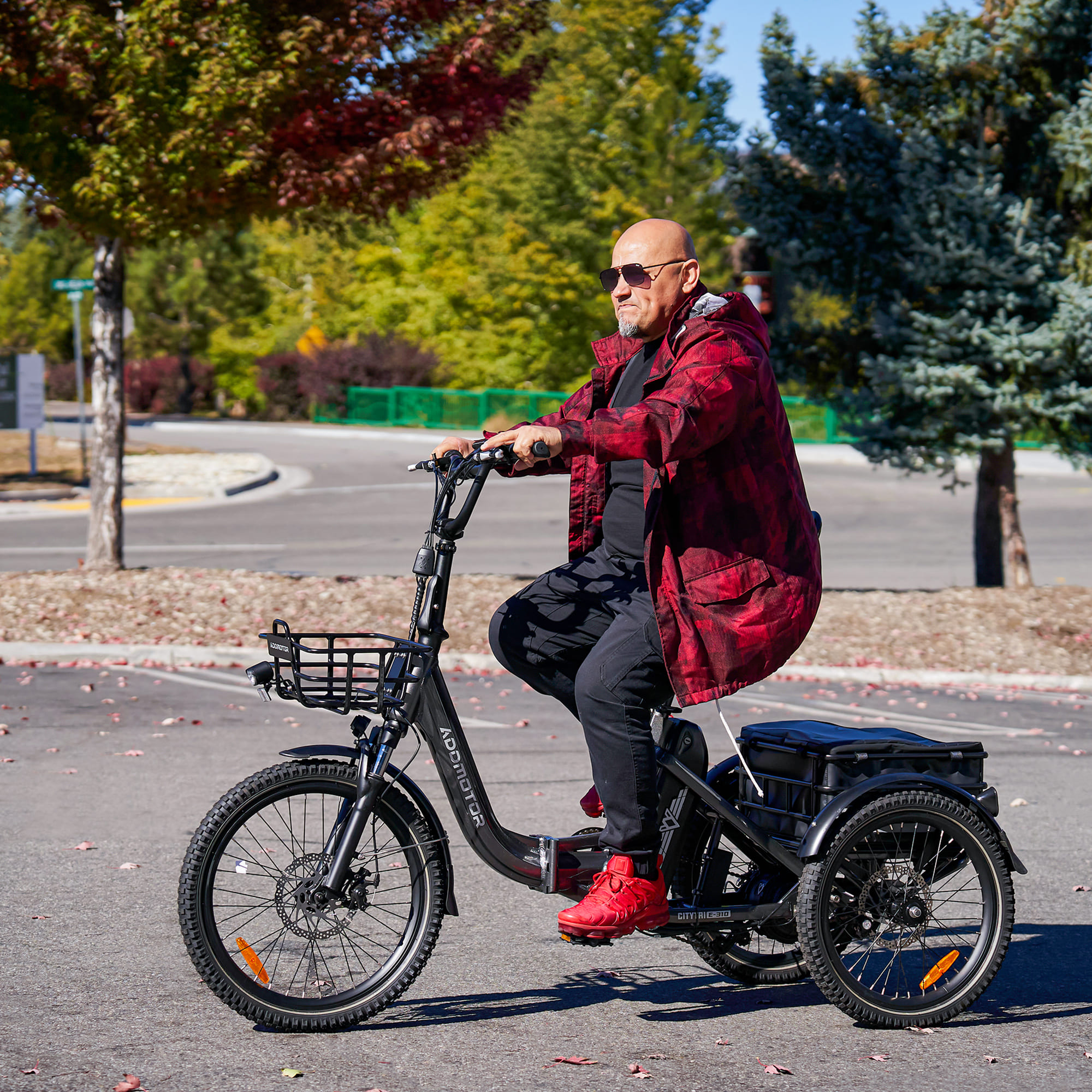ADDTECH | EBike Mechanical Components - Handlebar
By Addmotor | 27 April 2024 | 0 Comments
When it comes to electric bike handlebars, they aren’t just merely a component of the bike, they are almost like the steering wheel of your journey. Handlebars are what you hold onto and use to steer, which act as the primary point of contact and control for riders.
Even though they seem basic, they're really important for making sure you feel comfortable, stable, and in control while you ride and help enhance your overall riding experience.
So, how do you know which handlebars are right for you?
Well, this in-depth overview of the various types of e-bike handlebars and their unique features and benefits will assist you in picking the perfect ones next time you're shopping for an ebike or new handlebars.
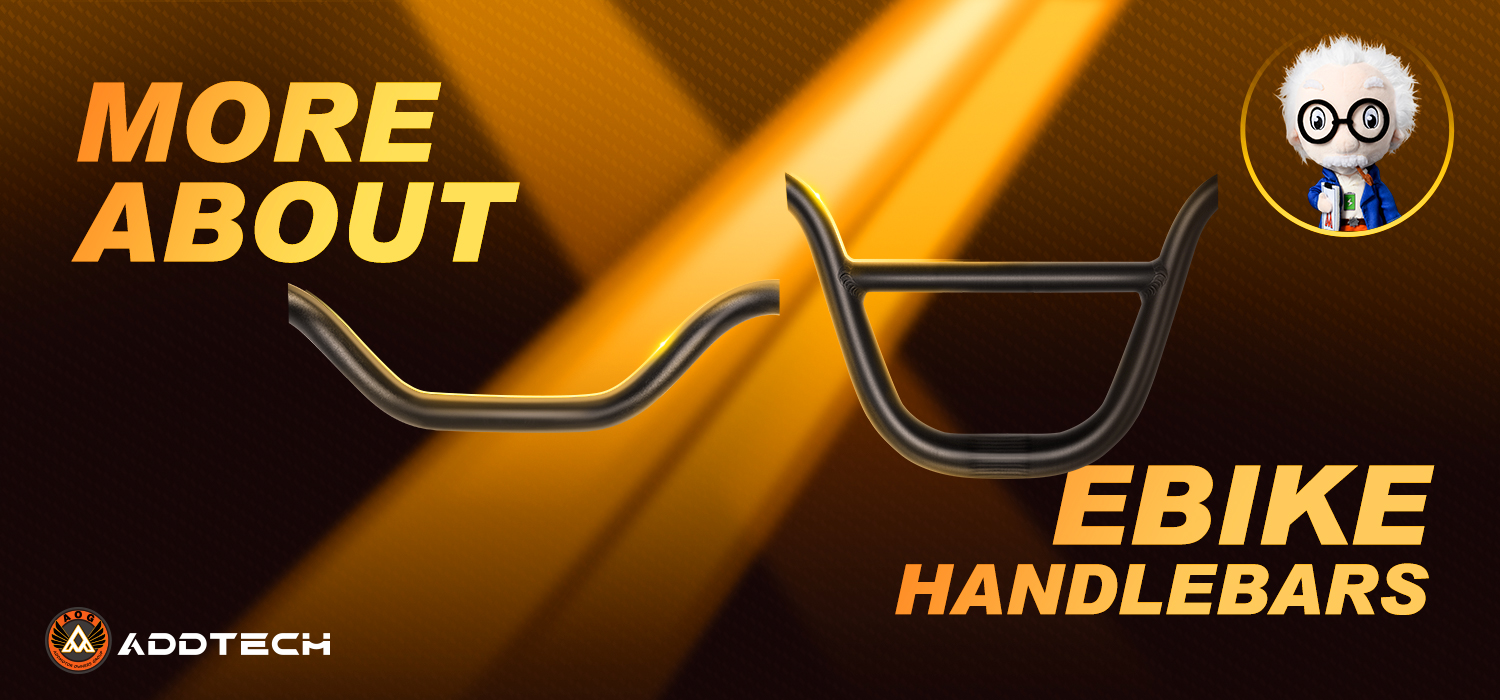
However, such handlebars are well known for their ergonomic design, offering you a blend of comfort and control.
At Addmotor we have embraced this innovative design across our range of ebikes and e-trikes, ensuring you can find your perfect fit.
So, let’s take a look at some of the advantages of this special design for riders:
For example, the FOLDTAN M-160 ebike sets itself apart with its ergonomic anti-slip aluminum U-shaped handlebars. This design is all about keeping you comfortable, especially on longer rides. By promoting a comfortable riding posture and providing a stable grip, it ensures you have a more enjoyable time on the road.
Then there's the TRIKETAN II M-330 etrike. It comes with a foldable black aluminum handlebar, adding flexibility and convenience to your ride. Its compact design and adjustable features make it perfect for city commuters and casual riders who want both performance and portability.
One example of this is the TRIKETAN M-350 etrike, which is made with black aluminum and has a sweep-back U-shaped handlebar.
It comes with an adjustable handlebar stem, so you can change the handle angle to fit your preferences and make your ride more comfortable. This setup also gives you more stability and control, making your journey safer and more relaxed. Plus, it's designed to be compact, so it's perfect for tight spaces.
For instance, the Grandtan II M-340 electric trike has a rotatable U-shaped handlebar made of durable black aluminum, with a width of 630 mm. Paired with a rotatable stem, this design allows you to adjust the angle for a comfortable upright position. This adaptability means riders of all sizes can find the perfect fit for comfort and control.
Similarly, the CITYTRI E-310 e-trike boasts a foldable U-shaped black aluminum handlebar with an adjustable stem. This gives riders the convenience of customizing their riding position for maximum comfort.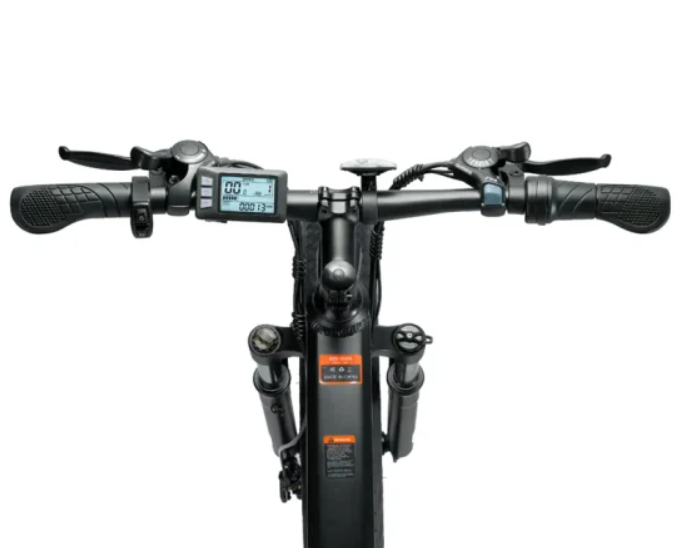
Known for their simplicity and straightforward design, flat bars offer a more upright riding posture with a slight forward lean. They're commonly found on mountain bikes, some hybrid bikes, and urban commuters, making them versatile for both off-road and on-road riding.
These bars have a straight profile, providing predictable steering and excellent control. You can lean forward towards the bar for a more aggressive position. This handlebar design is ideal for climbing and improving leverage and tire grip on rough surfaces.
They're typically the standard handlebars on most everyday bikes, excluding performance cycling bikes. Riders using flat handlebars enjoy a more upright position compared to drop bars or other bars designed for aggressive road riding. Hybrid and fitness bikes often come equipped with flat bars to maintain comfort on longer rides.
Pros:
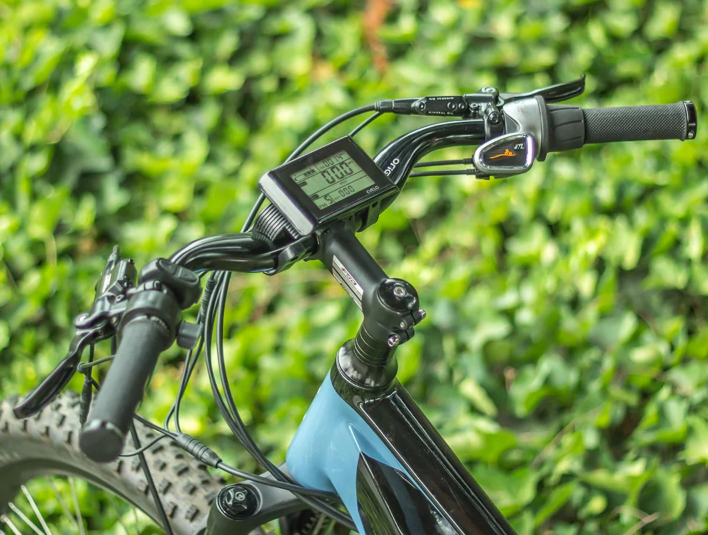
Cruiser bars are known for their relaxed, swept-back design, which encourages an upright posture while you ride. They're great for leisurely rides and beach cruisers, but they can also work well for everyday commuting or casual trail rides.
These handlebars offer a comfortable option for riders who value comfort more than speed and agility. If you prefer sitting completely upright while pedaling, cruiser bars are the way to go.
Pros:
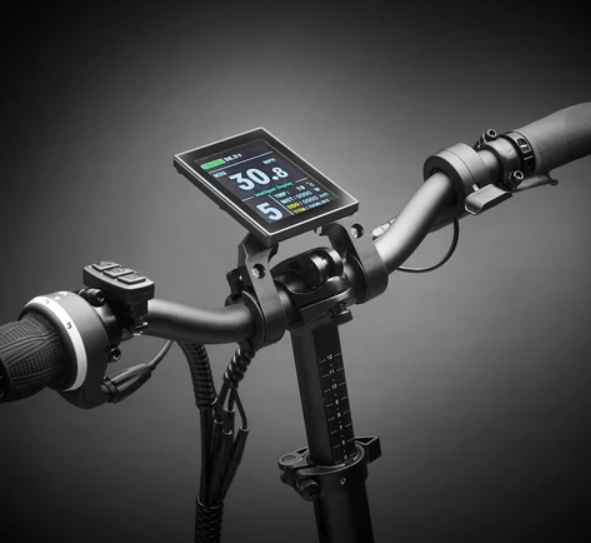
Similar to flat handlebars, riser bars have a slight upward bend, letting riders sit in a more upright position for better visibility and comfort. This also helps relieve tension in the wrists and back.
They're popular among bikers who need to see over traffic or want a more comfortable riding position due to injury or physical limitations. Riser bars are usually wider than flat bars and are commonly used on trail bikes because they allow riders to be slightly more upright.
Pros:
Even though they seem basic, they're really important for making sure you feel comfortable, stable, and in control while you ride and help enhance your overall riding experience.
So, how do you know which handlebars are right for you?
Well, this in-depth overview of the various types of e-bike handlebars and their unique features and benefits will assist you in picking the perfect ones next time you're shopping for an ebike or new handlebars.

Introducing U-Shaped Handlebar: Revolutionizing Comfort in E-Bikes
The U-shaped handlebar, as the name suggests, resembles the letter "U" when you see it from the front. This design puts the rider's hands above waist level. It became really popular back in the 1960s when wheelie bikes and chopper motorcycles started to get famous.However, such handlebars are well known for their ergonomic design, offering you a blend of comfort and control.
At Addmotor we have embraced this innovative design across our range of ebikes and e-trikes, ensuring you can find your perfect fit.
So, let’s take a look at some of the advantages of this special design for riders:
Ergonomic Comfort:
The U-shaped handlebar stands out for its ergonomic design, which is made to fit the natural position of your arms and wrists. This means you get a grip that feels natural and relaxed, which can help reduce strain and tiredness in your wrists and shoulders.For example, the FOLDTAN M-160 ebike sets itself apart with its ergonomic anti-slip aluminum U-shaped handlebars. This design is all about keeping you comfortable, especially on longer rides. By promoting a comfortable riding posture and providing a stable grip, it ensures you have a more enjoyable time on the road.
Then there's the TRIKETAN II M-330 etrike. It comes with a foldable black aluminum handlebar, adding flexibility and convenience to your ride. Its compact design and adjustable features make it perfect for city commuters and casual riders who want both performance and portability.
Enhanced Control:
The sweeping back design of these handlebars puts you in a more upright position. This not only feels comfortable but also gives you a wider grip and better visibility and breathing. It's great for navigating busy streets or tough terrain because this U-shaped design makes maneuvering easier.One example of this is the TRIKETAN M-350 etrike, which is made with black aluminum and has a sweep-back U-shaped handlebar.
It comes with an adjustable handlebar stem, so you can change the handle angle to fit your preferences and make your ride more comfortable. This setup also gives you more stability and control, making your journey safer and more relaxed. Plus, it's designed to be compact, so it's perfect for tight spaces.
Adjustability:
Many U-shaped handlebars come equipped with adjustable features, such as rotatable stems or foldable mechanisms, allowing riders to customize their riding position to suit their preferences.For instance, the Grandtan II M-340 electric trike has a rotatable U-shaped handlebar made of durable black aluminum, with a width of 630 mm. Paired with a rotatable stem, this design allows you to adjust the angle for a comfortable upright position. This adaptability means riders of all sizes can find the perfect fit for comfort and control.
Similarly, the CITYTRI E-310 e-trike boasts a foldable U-shaped black aluminum handlebar with an adjustable stem. This gives riders the convenience of customizing their riding position for maximum comfort.
Different Types of Handlebars
Apart from the U-shaped handlebar, there are several other types of handlebars available for electric bicycles, and the one you choose will depend on your riding style and preferences. Here are the most common types:Flat Bars:

Known for their simplicity and straightforward design, flat bars offer a more upright riding posture with a slight forward lean. They're commonly found on mountain bikes, some hybrid bikes, and urban commuters, making them versatile for both off-road and on-road riding.
These bars have a straight profile, providing predictable steering and excellent control. You can lean forward towards the bar for a more aggressive position. This handlebar design is ideal for climbing and improving leverage and tire grip on rough surfaces.
They're typically the standard handlebars on most everyday bikes, excluding performance cycling bikes. Riders using flat handlebars enjoy a more upright position compared to drop bars or other bars designed for aggressive road riding. Hybrid and fitness bikes often come equipped with flat bars to maintain comfort on longer rides.
Pros:
♦ Ideal for navigating city streets, cross-country trails, and leisurely rides.
♦ Allow for easy installation of various accessories like lights and bags.
♦ Light and relatively inexpensive compared to other types.
♦ Offer effective weight distribution, making it easier to climb small hills.
♦ Easy to handle, especially in tight spots.
Cons:
♦ Do not provide many hand positions.
♦ Not as aerodynamic.
♦ Not ideal for speed, especially against wind.
Cruiser Bars:

Cruiser bars are known for their relaxed, swept-back design, which encourages an upright posture while you ride. They're great for leisurely rides and beach cruisers, but they can also work well for everyday commuting or casual trail rides.
These handlebars offer a comfortable option for riders who value comfort more than speed and agility. If you prefer sitting completely upright while pedaling, cruiser bars are the way to go.
Pros:
♦ Comfort and stability, especially on longer rides.
♦ With your arms comfortably extended, they promote a natural, stress-free position.
♦ Help reduce strain on your back, neck, and shoulders.
♦ Offer better control at low speeds.
Cons:
♦ Might not be the best choice for long-distance or high-speed cycling.
♦ Not ideal for fast or aggressive riding.
Riser Bars:

Similar to flat handlebars, riser bars have a slight upward bend, letting riders sit in a more upright position for better visibility and comfort. This also helps relieve tension in the wrists and back.
They're popular among bikers who need to see over traffic or want a more comfortable riding position due to injury or physical limitations. Riser bars are usually wider than flat bars and are commonly used on trail bikes because they allow riders to be slightly more upright.
Pros:
♦ Better control and maneuverability on rough terrain.
♦ Easier turning and requires less energy.
♦ Proper weight distribution is ideal for trail and free riding.
♦ Plenty of space for attaching accessories.
Cons:
♦ The extra width can limit maneuverability in tight spaces.
Drop Bars:
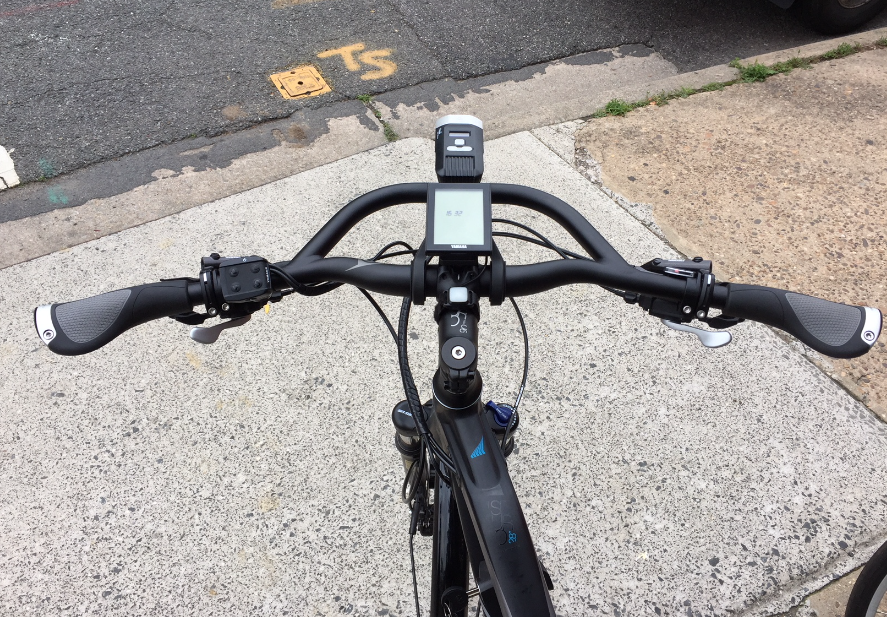
These handlebars resemble a bull's horns, jutting forward at both ends and slightly curving upward. They're popular choices for fixed-gear and time-trial bikes because they provide an aerodynamic riding position.
With bullhorn handlebars, you can get lower on the bike when facing headwinds or riding at fast speeds, making them ideal for those seeking speed without sacrificing control. They're commonly used in track racing and are great for climbing and descending quickly.
Pros:

These handlebars resemble a bull's horns, jutting forward at both ends and slightly curving upward. They're popular choices for fixed-gear and time-trial bikes because they provide an aerodynamic riding position.
With bullhorn handlebars, you can get lower on the bike when facing headwinds or riding at fast speeds, making them ideal for those seeking speed without sacrificing control. They're commonly used in track racing and are great for climbing and descending quickly.
Pros:
♦ Suitable for road cycling and riders who prefer a more aggressive riding position.
♦ Offers improved leverage for stronger pedal force when climbing.
♦ Provides multiple hand positions for comfort.
♦ Allows for a more aggressive riding position.
Cons:
♦ Not suitable for tight turns or quick maneuvering.
♦ Offers fewer hand positions compared to drop bars, which may affect comfort on long rides.
Bullhorn Bars:
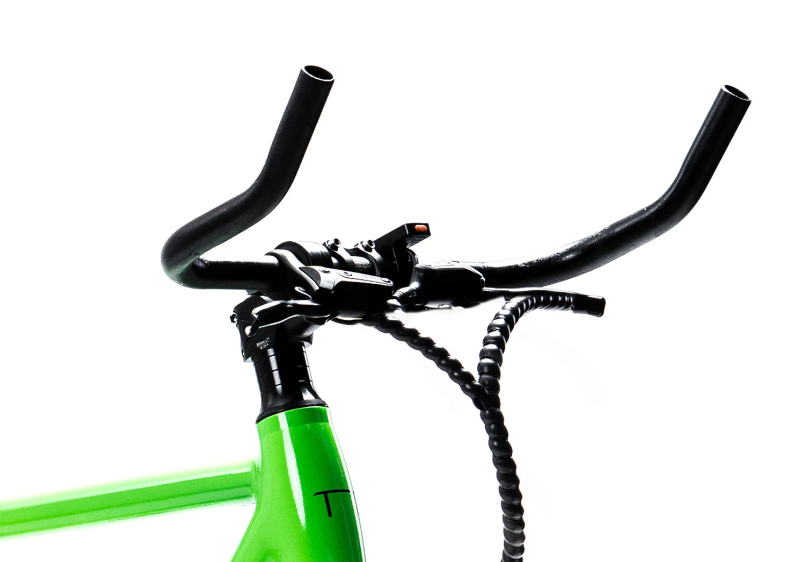
These handlebars resemble a bull's horns, jutting forward at both ends and slightly curving upward. They're popular choices for fixed-gear and time-trial bikes because they provide an aerodynamic riding position.
With bullhorn handlebars, you can get lower on the bike when facing headwinds or riding at fast speeds, making them ideal for those seeking speed without sacrificing control. They're commonly used in track racing and are great for climbing and descending quickly.
Pros:

These handlebars resemble a bull's horns, jutting forward at both ends and slightly curving upward. They're popular choices for fixed-gear and time-trial bikes because they provide an aerodynamic riding position.
With bullhorn handlebars, you can get lower on the bike when facing headwinds or riding at fast speeds, making them ideal for those seeking speed without sacrificing control. They're commonly used in track racing and are great for climbing and descending quickly.
Pros:
♦ Suitable for road cycling and riders who prefer a more aggressive riding position.
♦ Offers improved leverage for stronger pedal force when climbing.
♦ Provides multiple hand positions for comfort.
♦ Allows for a more aggressive riding position.
Cons:
♦ Not suitable for tight turns or quick maneuvering.
♦ Offers fewer hand positions compared to drop bars, which may affect comfort on long rides.
Aero Bars:
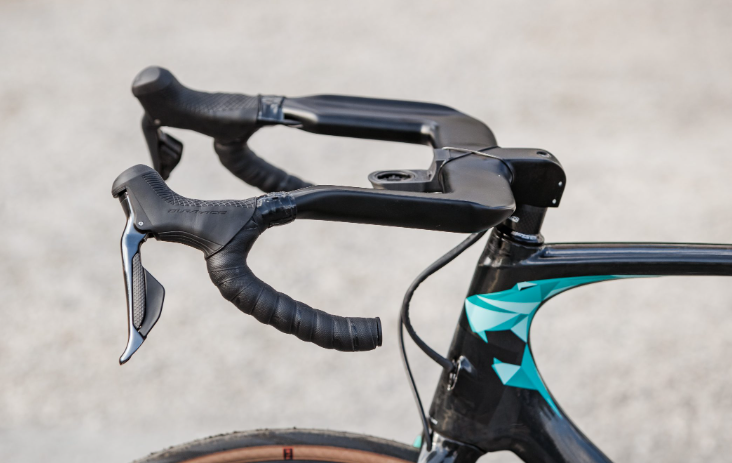
Primarily used in triathlons and time trial events, where riders race against the clock. They consist of two extended bars placed close together, allowing the rider to rest their forearms on armrest pads. This puts the rider in a narrow forward tuck position, reducing drag and promoting top speeds by minimizing air resistance.
While aero bars are excellent for achieving maximum speed, they can be challenging when it comes to braking. They're typically a safe choice for experienced riders.
Pros:

Primarily used in triathlons and time trial events, where riders race against the clock. They consist of two extended bars placed close together, allowing the rider to rest their forearms on armrest pads. This puts the rider in a narrow forward tuck position, reducing drag and promoting top speeds by minimizing air resistance.
While aero bars are excellent for achieving maximum speed, they can be challenging when it comes to braking. They're typically a safe choice for experienced riders.
Pros:
♦ Excel in racing scenarios, particularly for time trials and triathlons, enabling faster speeds on various terrains.
♦ Tucked position cuts wind resistance, improving aerodynamics.
♦ Less wind resistance means maintaining speed with less effort, and conserving energy.
Cons:
♦ Not suitable for everyday commuting or recreational riding.
♦ The narrow position reduces maneuverability, making it challenging for technical courses.
Butterfly Bars:
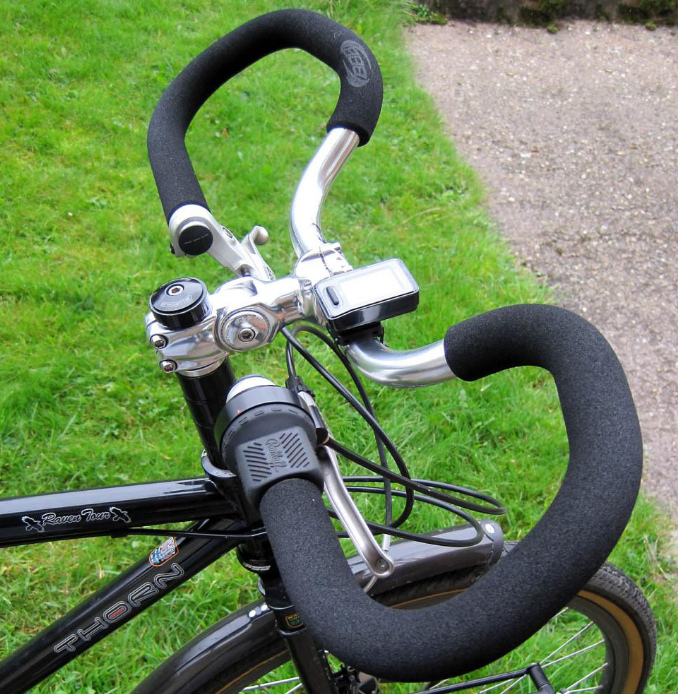
Featuring a unique butterfly-shaped design, these handlebars offer multiple hand positions, perfect for long-distance touring and adventure cyclists. They're commonly found on touring and trekking bikes, designed to offer excellent control and comfort.
With plenty of space for easy access to items like phones, bags, or mirrors, these handlebars are incredibly versatile for long rides. This versatility is key for reducing fatigue on extended journeys, allowing cyclists to change their grip and redistribute pressure points across their hands, wrists, and shoulders.
Pros:
By understanding the characteristics and benefits of different handlebar types, riders can make informed decisions that align with their preferences and riding styles.
Whether seeking comfort for leisurely rides or performance for competitive cycling, the diverse range of handlebar options caters to the needs of riders across various disciplines and skill levels.

Featuring a unique butterfly-shaped design, these handlebars offer multiple hand positions, perfect for long-distance touring and adventure cyclists. They're commonly found on touring and trekking bikes, designed to offer excellent control and comfort.
With plenty of space for easy access to items like phones, bags, or mirrors, these handlebars are incredibly versatile for long rides. This versatility is key for reducing fatigue on extended journeys, allowing cyclists to change their grip and redistribute pressure points across their hands, wrists, and shoulders.
Pros:
♦ Ideal for riders who prefer a more upright riding position.
♦ Suitable for long-distance riding, touring, and commuting.
♦ Great for accommodating shifters.
♦ Improves comfort by allowing adjustments to posture.
Cons:
♦ Heavier weight could cause drag.
♦ Not ideal for speed-focused bikes.
Conclusion
The choice of handlebars significantly influences the riding experience, comfort, and control of e-bike enthusiasts.By understanding the characteristics and benefits of different handlebar types, riders can make informed decisions that align with their preferences and riding styles.
Whether seeking comfort for leisurely rides or performance for competitive cycling, the diverse range of handlebar options caters to the needs of riders across various disciplines and skill levels.
Leave a Reply
Your email address will not be published.Required fields are marked. *
Latest Stories


